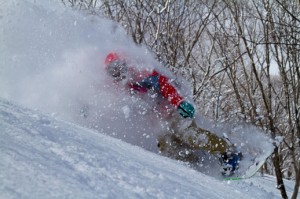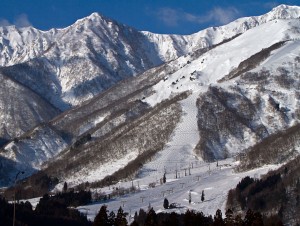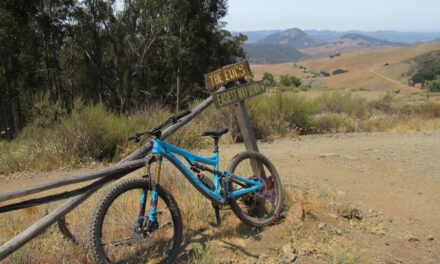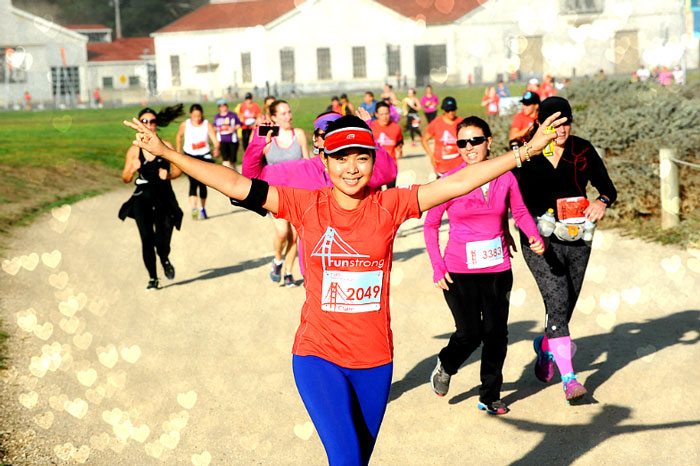- Tahoe’s Nevada Beach Tops the List of Hard-to-Book Campgrounds - 07/17/2024
- Cannabis Watershed Protection Program Cleans Up Illegal Grow Sites - 07/10/2024
- French Fire - 07/05/2024
How to find backcountry bliss in Japan’s Kita Alps
Words and photos by Seth Lightcap
So what’s a Sierra backcountry skier to do when the local snow pack won’t play along with your plans? Make a powder pilgrimage! Last February my wife Allison and I escaped the doldrums of high and dry conditions in Tahoe with a pow hunting trip to the Kita Alps in Hakuba, Japan.
We chose to go explore Hakuba after hearing rumors of simple travel logistics, easy access to epic backcountry terrain and consistent snow. Turns out it was all true, and then some. Between the bullet trains, the pillow fields, and the daily face-shots, we found Hakuba to be one of the finest backcountry skiing destinations we had ever visited.
Located about two hours northeast of Tokyo by bullet train, getting to Hakuba is a breeze by mountain town standards. Touring the magnificent peaks that surround the town is pretty easy too, but you’ll want to plan ahead and arrive with the right gear and experience to make it happen safely. As inspiration for you to make a mission to Hakuba this winter, I’ve selected a handful of images from our trip that detail what to expect, should you go. Check them out and start day-dreaming about a possible Ja’Pow pilgrimage.
Hakuba is a next-level backcountry ski destination for two reasons — terrain and access. Sure the snow quality is usually fabulous too, but feather light powder falls in a lot of places that don’t have well-organized lifts to the top of ridgelines littered with deciduous tree glades and spine walls. Touring above the backcountry gates at Goryu Ski Area (shown here) or Happo-One Ski Area, demands little effort to shred a wide variety of terrain. Some descents runout to the base of the resorts, while others require touring out, or climbing back up. Regardless of your route, one thing stays the same. You’ll see very few tracks, if any.
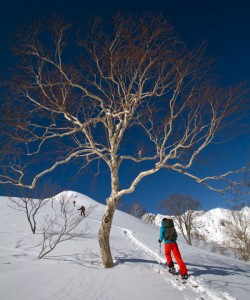
Here we are, high above the lifts of Goryu Ski Area on the Ootoomi ridge. The wind-whipped ridgelines make for relatively mellow touring as most remain wide and kicked back as they casually rise another 3000 feet above the resorts to the crest of the range. Cornices are often a significant hazard, however, so cautious route finding is critical. Dreamy untracked terrain will tempt you on both sides of the ridge allowing you to pick and choose lines based on the avy danger of each aspect or your intended route out. A windproof shell coat and ski crampons are two crucial items to bring in the Hakuba backcountry as the Kita Alps are notoriously windy.
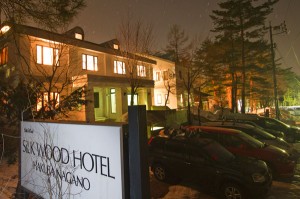
Lodging options in Hakuba run the gamut from $25-a-night hostel bunks to $2000-a-night hotel rooms. Most visitors stay in small to medium-sized hotels or lodges that offer meal plans and have an on-site onsen, a hot-spring spa. Double occupancy room rates at such hotels are between $60-150 depending on the amenities and meals provided. We stayed at the Silkwood Hotel located just adjacent to the base of Hakuba 47 ski area. Being able to walk to the lifts was a definite plus, as usual.

The Japanese are not immune to munching sugary empty calories, but they eat fresh food more meals than not, and they cook with fairly simple ingredients. It was a refreshing change from the average U.S. diet. Good backcountry lunches were the only thing we never figured out. Our Japanese friends ate sushi-like rice wraps for lunch, but the rolls never seemed to fill me up. Re-fueling at dinner was no problem, thanks to the delicious stir-frys and tall mugs of Sapporo that they served at the Silkwood. Good energy snacks were also tough to find. Consider bringing a box of your favorite bars or gels.

Japan is a very spiritual country as a majority of the population believes in aspects of Buddhism and Shintoism. The Shinto tradition places special significance on the natural world and believes spirits known as Kami inhabit prominent natural objects or forces such as mountains, wind or waves. Prior to big days in the backcountry our hosts took us to Shinto shrines around Hakuba to pay respect to the Kami and ask for safe passage into the mountains. Along the tops of the ridges you will also find small shrines dedicated to the Kami of that region.

With all that fantasy terrain in Hakuba comes the reality that many slopes are very avalanche prone. Heavy snow and high winds often combine to form wind slabs on the leeward slopes and the hot sun on exposed aspects creates wet slides. We encountered both types of dangers during our travels in the backcountry and were constantly on guard as we toured. Digging pits helped us judge the overall snowpack while making periodic hasty observations (hand pits, etc.) allowed us to judge danger as we changed aspects. The tricky nature of assessing avy danger in Hakuba highlights the importance of going out with a guide if you are not extremely avy savvy. Evergreen Outdoor Center in Hakuba offers both private and group backcountry ski trips. Find out more at www.evergreen-hakuba.com.
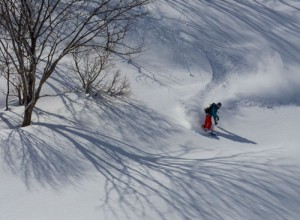
Here’s Allison reminding us what it’s all about — ripping blower turns amongst the surreal Birch trees. Hopefully you’ve got the notion that this fantasy is pretty simple to fulfill in Hakuba. You’ll rarely see more than a couple groups touring so fresh tracks are easy to find and the backcountry access off the ridge lines is all-time. The only caveats to successful touring in Hakuba are the usual, weather and avy danger, but those variables are present in every alpine region of the world. What will make a trip to Hakuba unlike anything you’ve experienced is the out-of-this-world terrain, the bountiful snow and the unbelievably friendly Japanese culture. Now stop dreaming and start booking a ticket to Tokyo!


